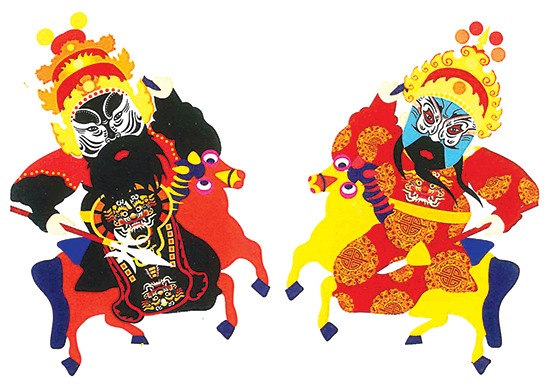 Life & Style
Life & Style

A new graduate of Hoa Sen University in HCM City has created a book of papercrafted figures about tuồng, a Vietnamese classical drama originating in the 12th century.
 |
| Future classic: Papercrafted figures in Hát Bội Hành Tội Người Ta (Singing Tuồng Fascinates People), a book featuring the traditional Vietnamese art tuồng by young woman Nguyễn Thị Kiều Diễm of HCM City. — Photo sgtiepthi.vn |
HCM CITY — A new graduate of Hoa Sen University in HCM City has created a book of papercrafted figures about tuồng, a Vietnamese classical drama originating in the 12th century.
Nguyễn Thị Kiều Diễm spent several months working on the book Hát Bội Hành Tội Người Ta (Singing Tuồng Fascinates People), which contains seven colourful papercrafts and explanations about tuồng.
“There are many books about Việt Nam’s traditional music and theatre, but only a few books feature tuồng. So, I decided to choose papercraft to attract young readers, particularly children, to the art,” said Diễm.
Papercraft uses paper or cards to create three-dimensional objects that can be folded, cut, glued, molded, stitched or layered.
“I researched and learned about papermaking from books and the internet. I spent four hours and a half making a template. I also talked with People’s Artist and painter Hoàng Song Hào. However, writing the explanations was the most difficult job,” she said.
Diễm used information from three books on tuồng written by cultural researchers Nguyễn Vĩnh Huế, Lý Tuần Khắc Dụng, Nguyễn Lộc and Võ Văn Tường.
Hát Bội Hành Tội Người Ta features tuồng and its performance styles since its development in the 17th century.
Along with traditional arts such as chèo (traditional opera) in the north and cải lương (reformed theatre) in the south, tuồng has contributed to the Vietnamese spirit and character.
Tuồng was developed from a folk art to be a royal art. Its themes include monarchist loyalty and patriotic duty, which define the play’s structure, language, music, colours, struggles and personality of its characters.
The art form includes singing and dancing accompanied by music, all of which is highly stylised and filled with symbolism.
The art consists of three performance styles: tuồng phò (plays based on old Chinese stories), tuồng đồ (plays about historical Vietnamese events and national heroes) and tuồng hài (comedies about people in daily life).
“My papercraft features tuồng artists on stage, who wear make up and wear beautiful costumes. Colours play a very important role in tuồng. For example, a face in black represents a bad character while a red face is a good person,” said Diễm.
She said that tuồng requires performers to use their whole body, from the head, eyes, fingers and elbows to all of their muscles.
Diễm’s book was honoured at the Vietnam Creative Festival launched by the Vietnam Creative Entrepreneurs Network this year, which aims to support young people in HCM City to develop their talent. The book is not for sale. — VNS




